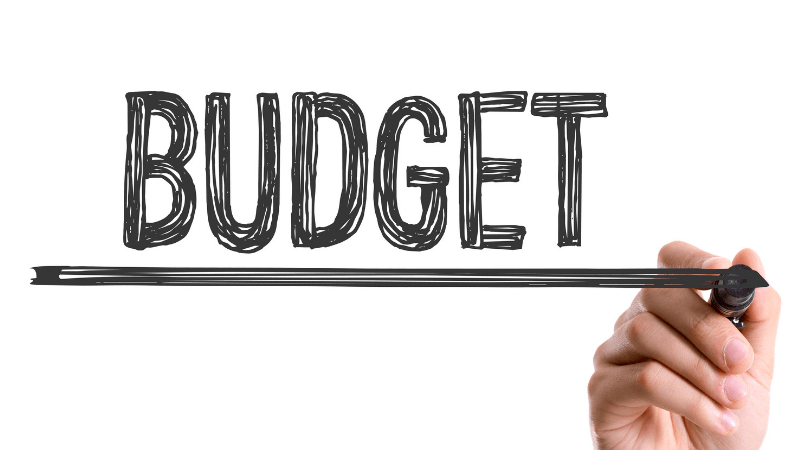Prepaid cards can be a valuable budgeting tool. Here’s a look at expense tracking, savings, and spending limit budgeting features available to help stay on track.
Most of us struggle with budgets–making one and keeping one. But using prepaid cards with budgeting features can make it a little easier. And when it comes to budgeting, easier makes it more likely that you’ll not only make a plan, but also stick with it.
So, how can a prepaid card help? And which cards have the budgeting features you need?
Tracking Your Spending
Understanding how you currently spending your money is the start of any good budget. If you don’t know where your money is going, you can’t see where you can make cuts.
If you’re carrying a prepaid card with the Visa or Mastercard brands, you can use it for virtually all of your spending. And nearly all prepaid cards provide easy access to your transaction history. By reviewing your transaction history, you can see where every penny is going. Much easier than trying to write down every expense or stuffing those little receipts in your wallet.
When you review your transaction history, categorize your spending. Categories like eating out, entertainment, groceries, utilities. Determine which expenses are necessary and unavoidable and which ones you can scale back.
While you can use any prepaid card to get your payment history, prepaid cards like the Netspend® Visa® Prepaid Card card or the Green Dot Prepaid Visa® card make this a little easier. They automatically assign a category to expenses when the vendor is recognized–like restaurants or groceries.
Pay Yourself First
Budgeting experts regularly recommend paying yourself first. And with good reason. Paying yourself first means treating your savings as your first expense. Saving “what’s left” after everything else is paid is a sure way to ensure that nothing will be.
Several prepaid cards offer high-interest savings accounts attached to the prepaid card, including Brink's Prepaid Mastercard® and Mango Prepaid Mastercard.
Prepaid card savings accounts are not substitutes for retirement savings accounts like an IRA or 401(k) plan. But they can be a way to put away to provide for an emergency fund or other savings need while still earning higher interest than a traditional bank savings account.
Plan for Larger Expenses
While managing monthly expenses is the core of every budget, a complete budget needs to account for larger infrequent expenses–like a vacation or a downpayment for a car.
A number of prepaid cards help you plan for those savings targets for shorter term spending goals.
The offers a RushGoals feature to save and track progress towards various goals. Users can create goal accounts, naming them and setting specific targets, then transfer money into those subaccounts.
As a little added incentive, RushCard will refund up to $2 in fees to your account each month you maintain an average RushGoal balance of $500 or more across your goal accounts. This won’t wipe out your entire monthly fee, but it will reduce your costs.
The Walmart MoneyCard® Visa® offers a Vault feature to help users save. It’s a way to set aside money on the card that can’t be used for spending.
As a bonus, the Walmart MoneyCard automatically enters users in their monthly Savings Sweepstakes when users click “STASH” in the app or online to move money into their Vault. Users get 1 entry for every dollar saved up to 500 entries per month. The grand prize each month is $1,000. All other winners receive $25 applied to their MoneyCard account or as a Walmart gift card.
Set (and Keep to) Your Spending Limits
Ultimately, a budget is a way to plan for your current and future needs and goals. To plan for both, you need to set reasonable limits on those categories that aren’t necessities.
Once you set your limits, you have to stick to them. While you’ll need to set the limits, some prepaid cards can provide a little help following them.
Budget Reminders with Netspend
The Netspend® Visa® Prepaid Card, and most cards managed by Netspend including the PayPal Prepaid Mastercard® and Brink's Prepaid Mastercard® cards, offer customized spending alerts to let you know when you’re getting close to your budget limits.
You can set spending limits for your budget categories through the online portal or mobile app. Then, when you get close to the limit, you’ll get text reminders and push notifications.
While these tools won’t prevent you from overspending, keeping your budget visible as you make spending choices may be the nudge you need to stick to your plan.
Envelope Budgeting with FamZoo
The FamZoo Prepaid Card isn’t a traditional prepaid debit card. It’s designed as a prepaid card for families with teens.
But the FamZoo card isn’t just for teenagers. It can be a great way for families to create a digital “envelope budgeting” system. Traditional envelope budgeting is a way to budget by dividing your available cash into an envelope for each spending category.
FamZoo allows you to create virtual envelopes, called “IOU accounts”, to replace the envelopes. You can create an IOU account for each of your budget categories. When the money’s gone, that’s the end of your spending for that category.
FamZoo even allows users to split deposits, like your paycheck, automatically making it even easier.
Using Linked Cards for Budget Categories
Similar to the FamZoo virtual accounts, some prepaid cards let you use separate physical cards for your budget categories.
Akimbo Prepaid Mastercard
The AkimboTM Prepaid Mastercard takes the approach of subaccounts to help its cardholders manager budgets. Each subaccount is associated with a physical card. You can even name the card according to the subaccount–like “Groceries” or “Entertainment.”
The ability to name cards and track spending in each subaccount from one main portal makes it easy to get a complete picture of an envelope type budgeting system. The downside is that it involves a little juggling using multiple cards.
While Akimbo has no limit on subaccounts, only the first subaccount card is free. Each subsequent card has a $4.95 creation fee.
American Express Serve
The American Express Serve® prepaid card has a similar approach to Akimbo. Serve allows users to create up to four subaccounts, with a separate card for each. If you’re only looking to manage a few spending categories with your prepaid card, the Serve card might be the ticket. Adding subaccounts to has no fee and users can instantly fund the subaccounts from the online portal or mobile app.
Be aware that subaccounts can’t use the Serve bill pay feature or transfer money between subaccounts. All loads will go directly to the main card and need to be manually transferred to subaccounts.
A Final Word
A prepaid card can help you tackle some budgeting basics–like reviewing spending, setting savings targets, and staying within spending limits.
Tools are helpful, but all successful budgets require commitment. Prepaid cards can be good tools to help steer your budget in the right direction. But you still need to be in the driver’s seat.





